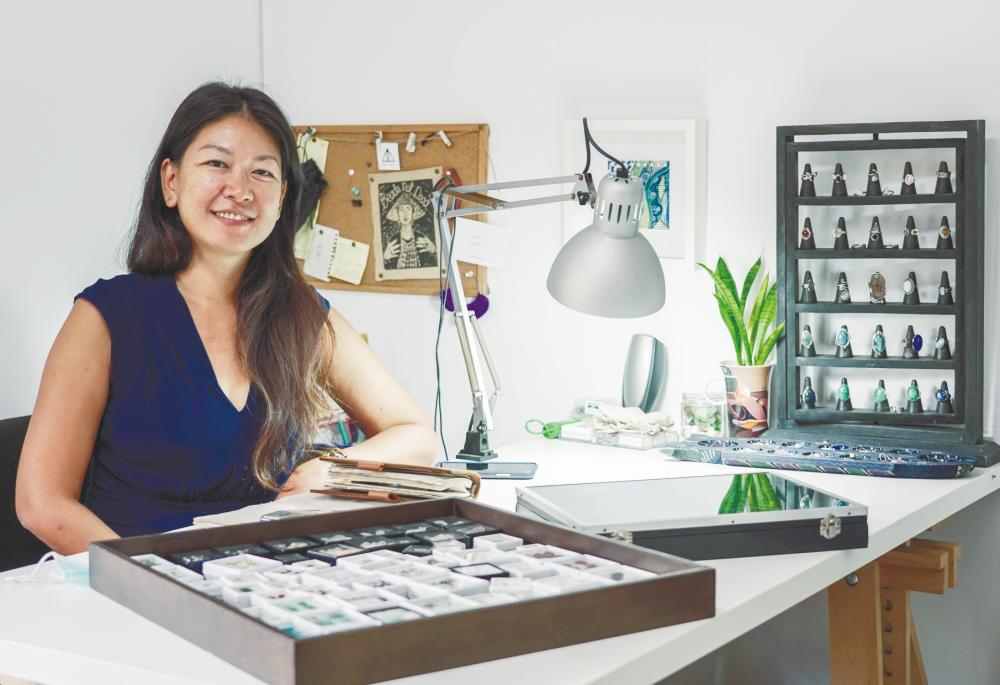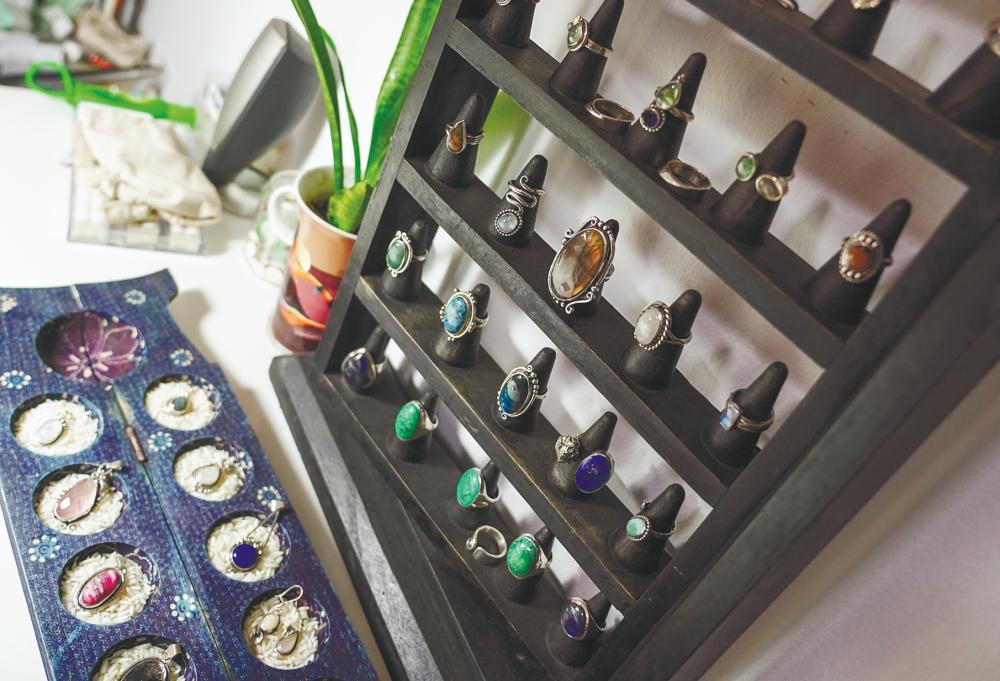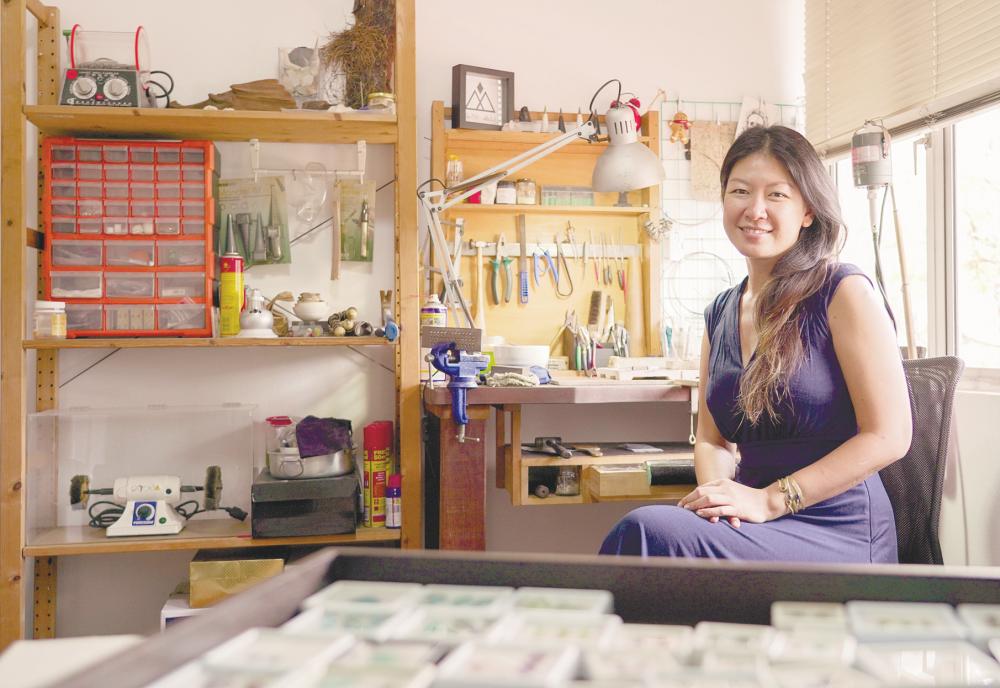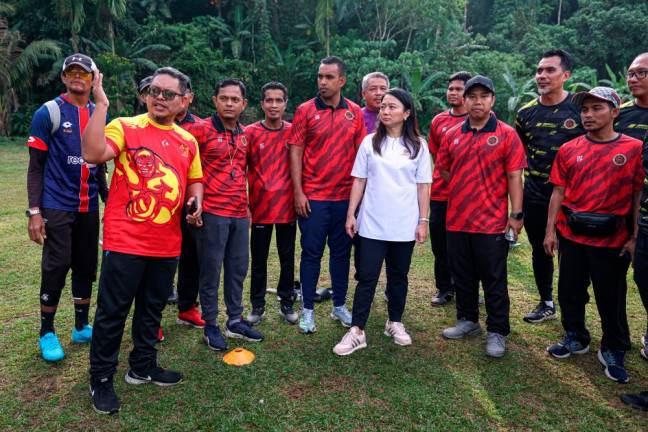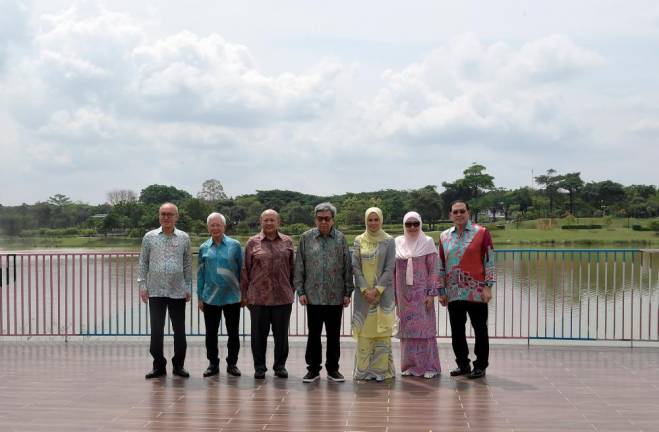SILVERSMITHING started as a hobby, an adventure that Aini Ali took with her friend some ten years ago. Today, she is the founder of AiniAliDesign, and makes handcrafted artisan silver jewellery from her studio in Taman Tun Dr Ismail.
Her setup is modest; in the back room of her studio and in a corner, against two walls, is a wooden work table layered with slabs of heat resistant stone where she practices her craft.
Working by natural night that comes through the window, and a lamp if the skies get too dark, she sets stones into silver jewellery that she designed, moulded, and shaped with the collection of tools hanging on the wall in front of her.
Behind where Aini sits is a larger wooden table where she displays her finished products, lays out her collection of beautiful stones, and meets clients in person.
“These are my designs,” said Aini, pointing out her collection of rings, earrings, and pendants on a display rack. “They’re artisanal, tribal, and nature-inspired.” They look like silver flowers, with small petals and large polished pistils.
Most of the work is done by shaping the silver with tools. With pliers, hammers, cutters, and casting moulds to aid her, she works with silver that has been melted into a puddle and poured into shapes or silver wires that are then bent and cut into designs.
Before working with silver, Aini’s medium of choice was beads. But, she soon found the designs of the craft limiting, and tried her hands-on working with silver. She began by taking classes on silversmithing.
Ten years later, she is still perfecting her craft and taking courses. Most recently, Aini has been taking a course on working with silver clay.
The material is a non-toxic organic binder mixed with dust particles of pure precious metals. It can be worked just like clay, but once heated in a kiln, everything but the precious metal would burn away, leaving behind an object of pure silver.
“Another technique that I want to work on is wax casting,” said Aini. The method requires more equipment and a large kiln. “It’s a more invested process that requires more than I can do in my studio right now,” said added.
However, the process results in more intricate and reproducible designs.
Aini’s passion for making jewellery is taking her beyond creating her own pieces and commission pieces.
Understanding that each piece of jewellery has a story – especially classic jewellery such as heirlooms – she is on a mission to learn more about traditional designs and incorporating them onto her own.
“A lot of the younger generation are not aware of how beautiful the traditional jewellery designs from our region are,” said Aini.
“They know about Celtic designs and Native American designs, but when it comes to designs from the Nusantara, like a kerongsang, all they know is that it is worn with baju kurung.
“To me, that is really sad. Because Southeast Asian culture, our culture, is so interconnected and so intricate but the appreciation for it is lost.”
She began her journey into traditional jewellery designs with Peranakan pieces. She learned that back in the 1960s, there was a pointed ellipse design, set vertically, that was all the rage in Melaka.
“So one day a client brought a piece of jewellery, her grandmother’s, and it had one of those stones in a long pointed ellipse shape,” said Aini.
The client loved the shape of the stone but thought that the rest of the ring looked old fashioned, and wanted the stone to be set horizontally in a bracelet instead.
“For some reason, I found the Peranakan design of the ring fascinating. So I did my research and found one Singaporean article which stated that the design is inspired by seeds from the Canarium plant (buah kana),” said Aini.
She also found out that the stone was in fact a sapphire from Sri Lanka and had a unique purple sheen. “Back then a lot of precious stones were from Sri Lanka. It came to Malacca through trade. It was fascinating, but why is no one talking about it?” said Aini.
The knowledge that there are stories behind every design made her collaborate with other local artisan jewellers, and do her own research to learn more about traditional and classical designs and incorporate them into her own.



